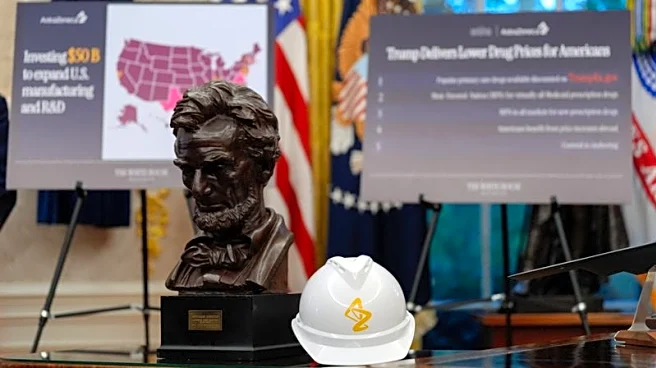What's Happening?
UK Research and Innovation (UKRI) has initiated a procurement process to select a long-term construction partner for an extensive £800 million estates program across its national science and technology research sites. The Science and Technology Facilities Council (STFC), a part of UKRI, published the tender notice on October 10, seeking a construction firm to undertake capital works under an eight-year partnership agreement from July 2026 to July 2034. The successful bidder will collaborate with a separately procured program partner to execute STFC’s national estate transformation and decarbonization program. The scheme encompasses backlog maintenance, asset replacement, and the construction of new infrastructure, with projects ranging from basic shell-and-core buildings to complex scientific facilities. The maximum spend under the contract is set at £800 million excluding VAT, or £960 million including VAT, although UKRI has indicated this is the program’s upper limit and not fully guaranteed.
Why It's Important?
This initiative is significant as it represents a major investment in the UK's scientific infrastructure, aiming to modernize and decarbonize key research facilities. The program is expected to enhance the capabilities of sites such as the Rutherford Appleton Laboratory and the Royal Observatory in Edinburgh, which are crucial for scientific research and innovation. By addressing backlog maintenance and supporting future growth, the program will ensure these facilities remain at the forefront of scientific discovery. The investment also aligns with broader environmental goals, as decarbonization efforts are integral to the program. This could lead to increased efficiency and sustainability in scientific operations, potentially attracting more research projects and funding to the UK.
What's Next?
Interested construction firms have until November 14 to submit expressions of interest, with the contract expected to be awarded in December. The selection process will follow a competitive flexible procedure under the Procurement Act 2023, including a pre-qualification questionnaire, two dialogue stages, and a final assessment center for shortlisted bidders. Once a construction partner is appointed, work will commence in July 2026, marking the start of the eight-year transformation program. Stakeholders, including scientific communities and environmental groups, may closely monitor the program's progress and outcomes, given its potential impact on research capabilities and sustainability.
Beyond the Headlines
The program's focus on decarbonization highlights the growing importance of sustainability in scientific infrastructure development. This could set a precedent for future projects, encouraging other research institutions to prioritize environmental considerations in their operations. Additionally, the program may stimulate local economies by creating construction jobs and fostering partnerships with technology and engineering firms. The long-term benefits of modernized facilities could also enhance the UK's position in global scientific research, potentially leading to increased international collaboration and investment.












